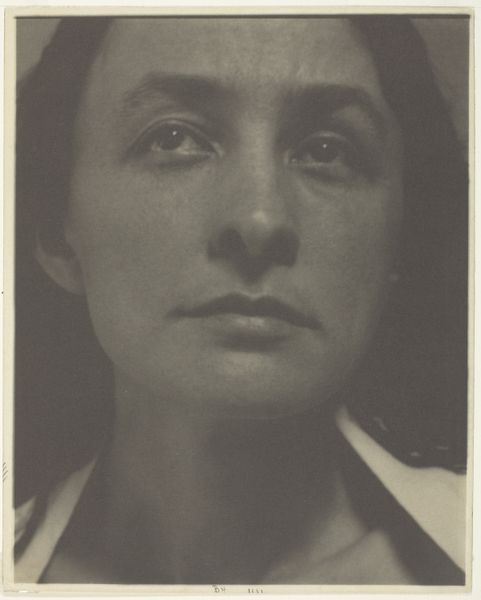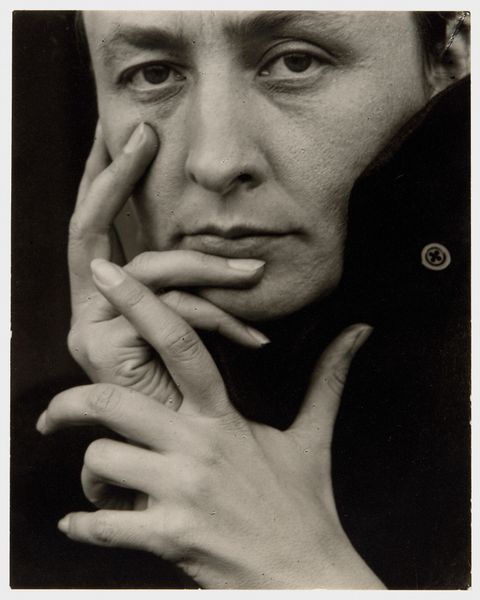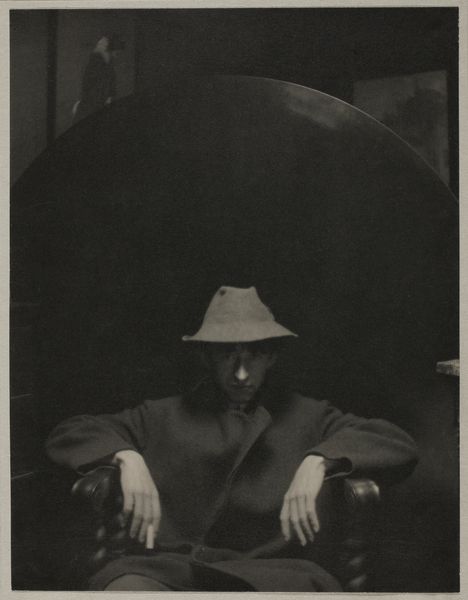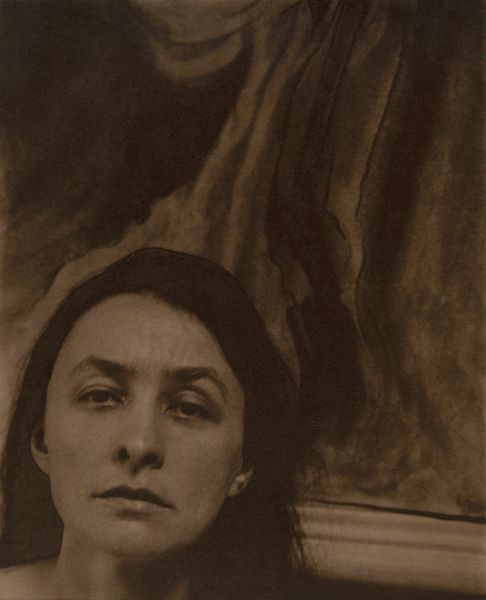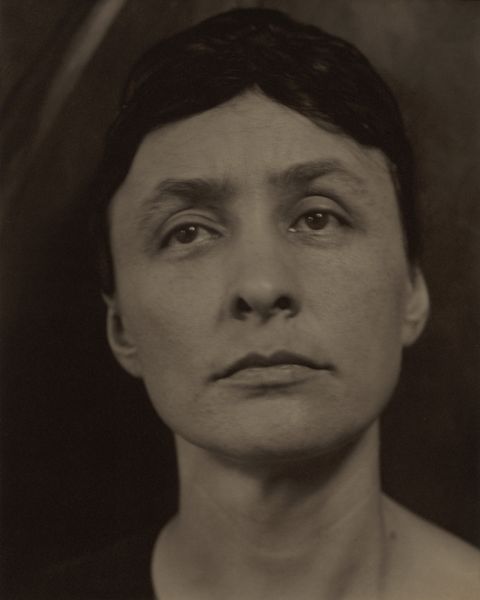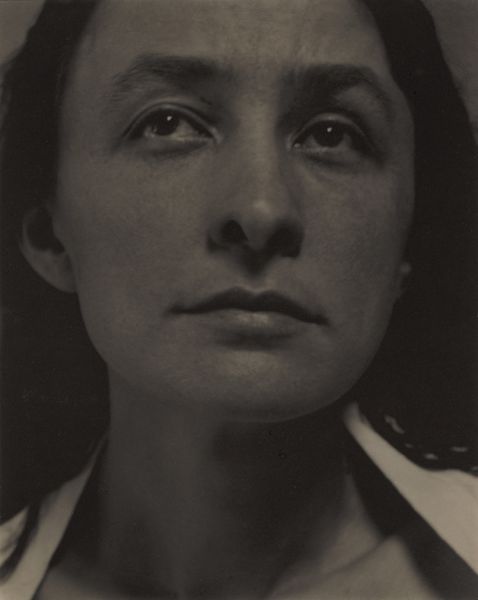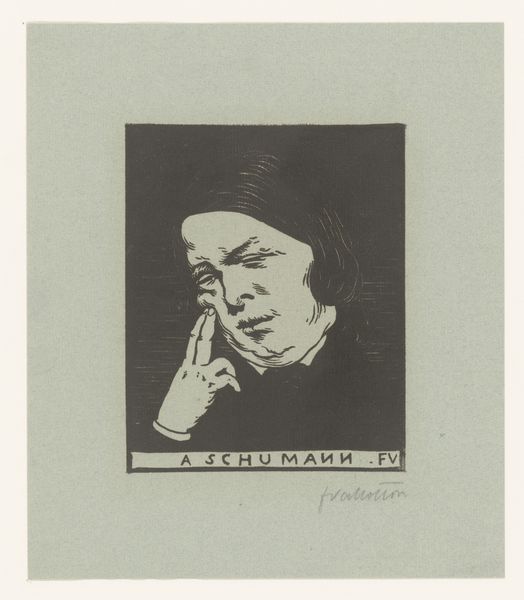
print, photography, gelatin-silver-print
#
portrait
#
self-portrait
#
pictorialism
# print
#
photography
#
gelatin-silver-print
#
modernism
#
portrait photography
Dimensions: 24.3 × 19.3 cm (image); 25.3 × 20.3 cm (paper); 56 × 46.5 cm (hinged mat)
Copyright: Public Domain
Editor: Right now, we're looking at "Rebecca Salsbury Strand," a gelatin-silver print made in 1922 by Alfred Stieglitz. The mood is surprisingly intense for a portrait. It feels incredibly intimate, almost like we're intruding on a private moment of contemplation. What do you read into this work? Curator: Well, what strikes me first is that raw honesty. It's a portrait, yes, but it's almost like Stieglitz is peeling back the layers, showing us something beyond just a likeness. Consider the Pictorialist movement that Stieglitz championed. They used soft focus, manipulated prints, aiming for an artistic effect akin to painting. But here, he uses that to invite introspection. Do you see how the lighting emphasizes the lines of her face, those slight creases on her brow? Editor: Definitely, it highlights a sense of concern. So, he’s using these typically "artistic" photographic techniques to push past the aesthetic, searching for truth? Curator: Precisely! And Rebecca, his subject, and eventual wife of another famous artist, also had a similar artistic style. Stieglitz used photography not to document, but to evoke feeling. A camera becomes a brush and he’s painting emotion and lived experience rather than an objective picture. I think he captures her spirit so genuinely and creatively that it resonates even today. What do you think of how close-up this is? Editor: That makes me feel even more like a fly on the wall, which I love, because it’s unexpected. Thanks, I'll keep an eye out for more honest photos from that period. Curator: My pleasure! A photograph is just a reflection of life through a subjective lens.
Comments
No comments
Be the first to comment and join the conversation on the ultimate creative platform.
